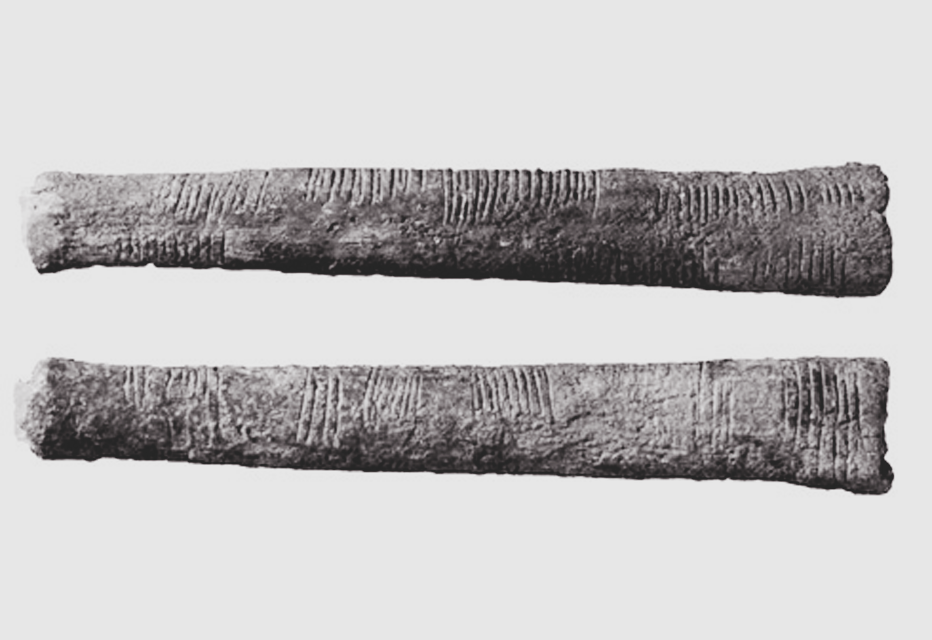Bear with me here.
It’s clear that integers are incredibly practically useful at our scale of space-time. From buying 2 apples instead of 3 to enabling the Hayabusa asteroid interception missions, civilization is built on integers and the math derived from them (which includes the non-integers).
But when you drill down on the reality behind integers, I have to question if they exist.
What does this mean? It means that, as Heraclitus said, you can never cross the same river twice. Nor bite into the same apple twice. Nor is the Hayabusa that left earth the same Hayabusa that returned.
At these scales – our human scales – this is really just metaphysics. I’m not sure anyone would disagree with these statements. It’s so apparent that a river is constantly changing, of course, we cannot cross the same river twice. Likewise, most people probably accept that the constant bombardment of stimuli means we, as people, must be ever-changing (at least a little bit). The Hayabusa mission was long, it was subjected to all kinds of external forces, so it’s easy to accept what left earth was not exactly what arrived at 25143 Itokawa. It’s maybe a little harder to see how you can’t bite into the same apple twice, but if you think about how brown a sliced apple becomes in a matter of hours, you should see that the oxidation process is, of course, occurring all the time, just in such tiny amounts you can’t perceive it. But that doesn’t mean it’s not happening.
OK, so all of that is trivial, right?
But so, what, then, do we actually mean by ONE thing vs. TWO things? What can we choose, out there in the real physical universe, that actually embodies this concept? Have we found anything in the universe immutable enough to be considered “a single thing?” Anything that is not in a constant state of change and, therefore, not “a single thing” but more of an eternal waveform interacting and intertwined with all the other waveforms around it. In some sense, taking this concept to its logical conclusion, isn’t the entire universe a single waveform?
I can’t think of an answer to the question: is there anything that embodies the concept of the number 1 (and thus all other integers)? Even the most stable of molecules, EG cubic diamonds, are constantly decaying Even the stoic Helium atom gives off electromagnetic radiation.
What about fundamental particles? What about the neutrino, for example, which is so famously hard to detect because it has no charge and such a tiny mass it almost doesn’t interact with other matter? But even these “particles” have the quality we call “spin” which can (and does) change “direction” if not magnitude. For that matter, they’re not even “particles” in a sense we can understand – they’re not “little balls” and, as well as behaving like particles, they also all exhibit the properties of (guess what?) waves.
What about the Higgs-Boson? Also a wave in a field. And what could be less like an integer than a wave?
So even when we drill down into the most basic building blocks of reality, I feel like we have to come to the conclusion that integers don’t exist in the same way we know they don’t “really” exist at our human scale. Even at the most fundamental level, Everything (capital “E”) is a rushing river.
But why does any of this matter, if, as already noted, integers and the math built on them continues to be so incredibly effective at helping us conquer the world around us?
I believe it matters because we assume there must be answers to the many paradoxes, both physical and abstract, our mathematical system also gives rise to.
But if it’s true that integers do not represent higher reality (IE one at the largest and smallest scales of existence), then don’t we have to wonder if those paradoxes are actually just artifacts of a system that is based on, if not our imagination, then at least on our perception?
Image Courtesy: J. Bogoshi, K. Naidoo and J. Webb, “The oldest mathematical artefact,” Math. Gazette, 71:458 (1987) 294. MR 89a:01003
